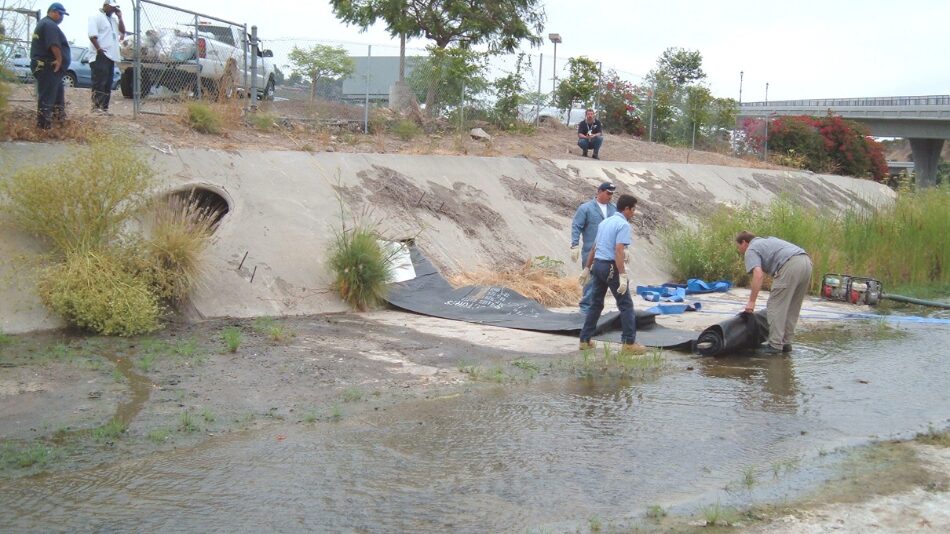
Workers have launched the 18-inch tall 3ft wide 60ft long single closed end (SCE) AquaDam® from its starting bank. To ensure proper installation and functionality of a SCE AquaDam, it is essential to have a starting bank that maintains a higher elevation than the body of the AquaDam. The open end and fill-tubes of the SCE AquaDam® must remain elevated above the full height of the dam along its designated path. It is important to note that an AquaDam® will only reach its maximum height at the lowest elevation point along its designated path.

The open end of the AquaDam® has been securely fastened to a metal fence post to ensure stability during the filling process. AquaDams come shipped rolled-up like a carpet roll on a wooden beam, wrapped in a protective covering, and have lifting ropes/straps.
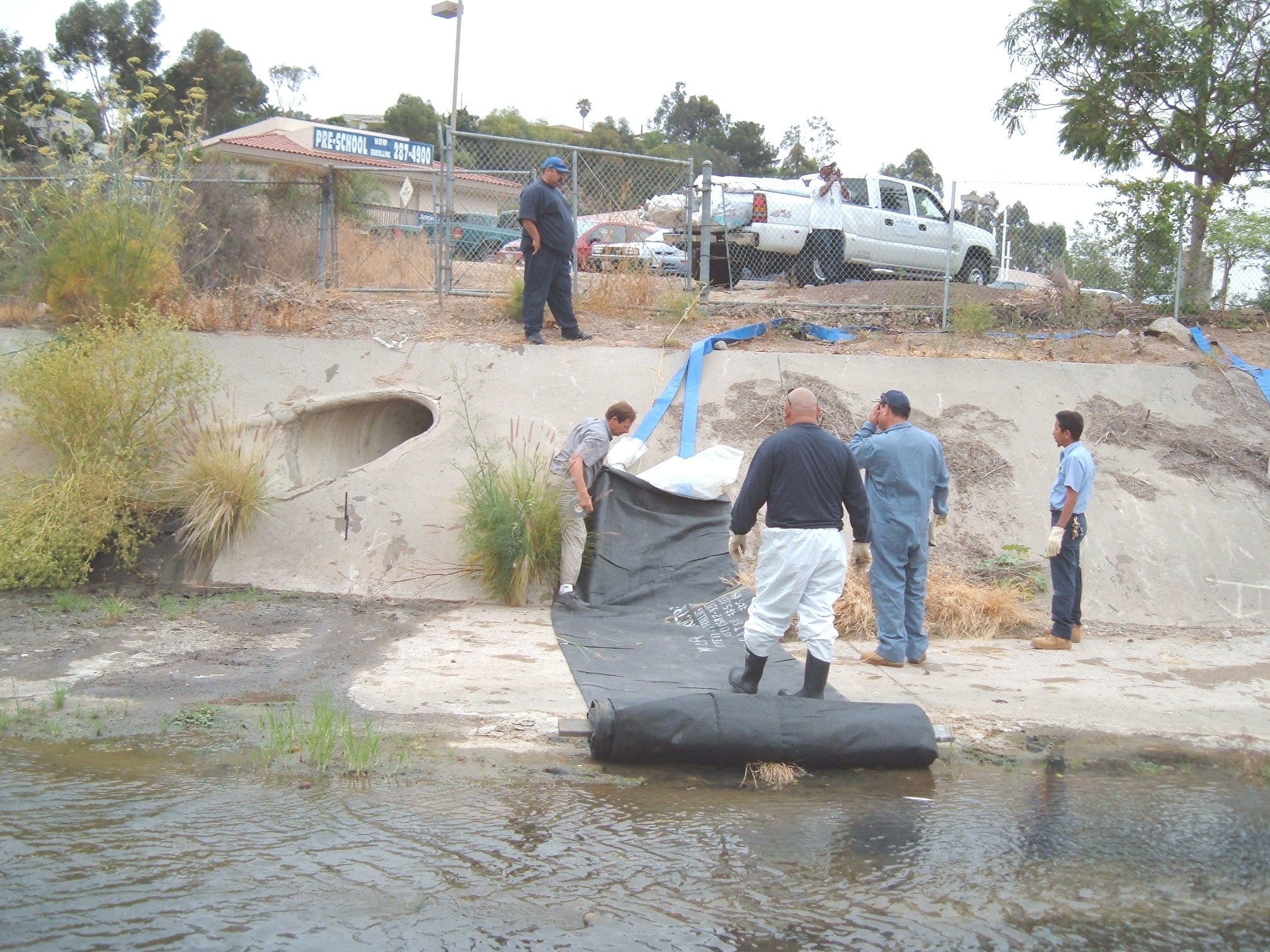
Workers insert discharge hoses into the fill-tubes of the AquaDam® so that it can be filled with water and secure the material of the fill-tubes around the hoses.
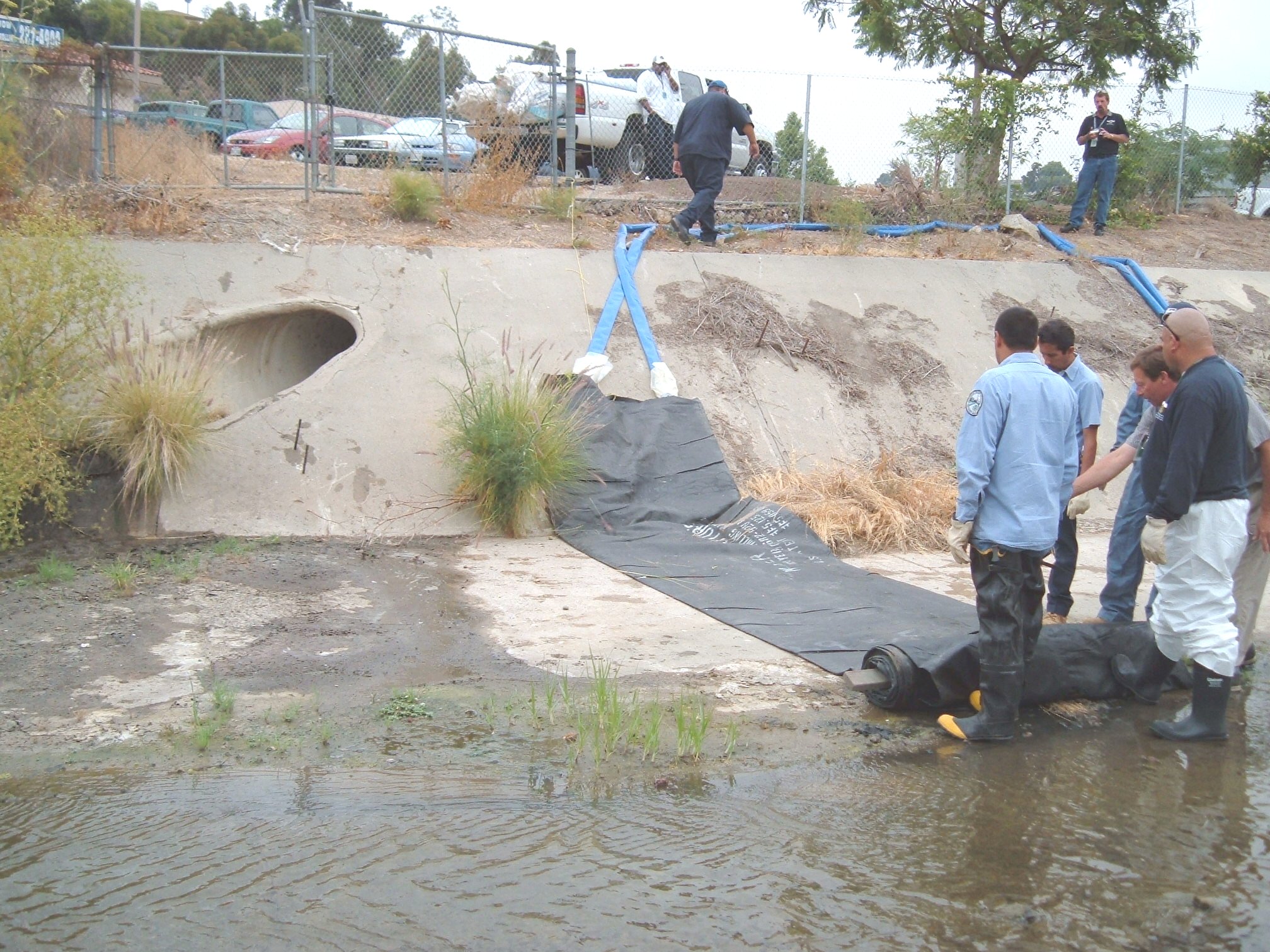
The 18-inch tall AquaDam® is ready to be filled and workers hold the roll end as the water begins to fill the unit.
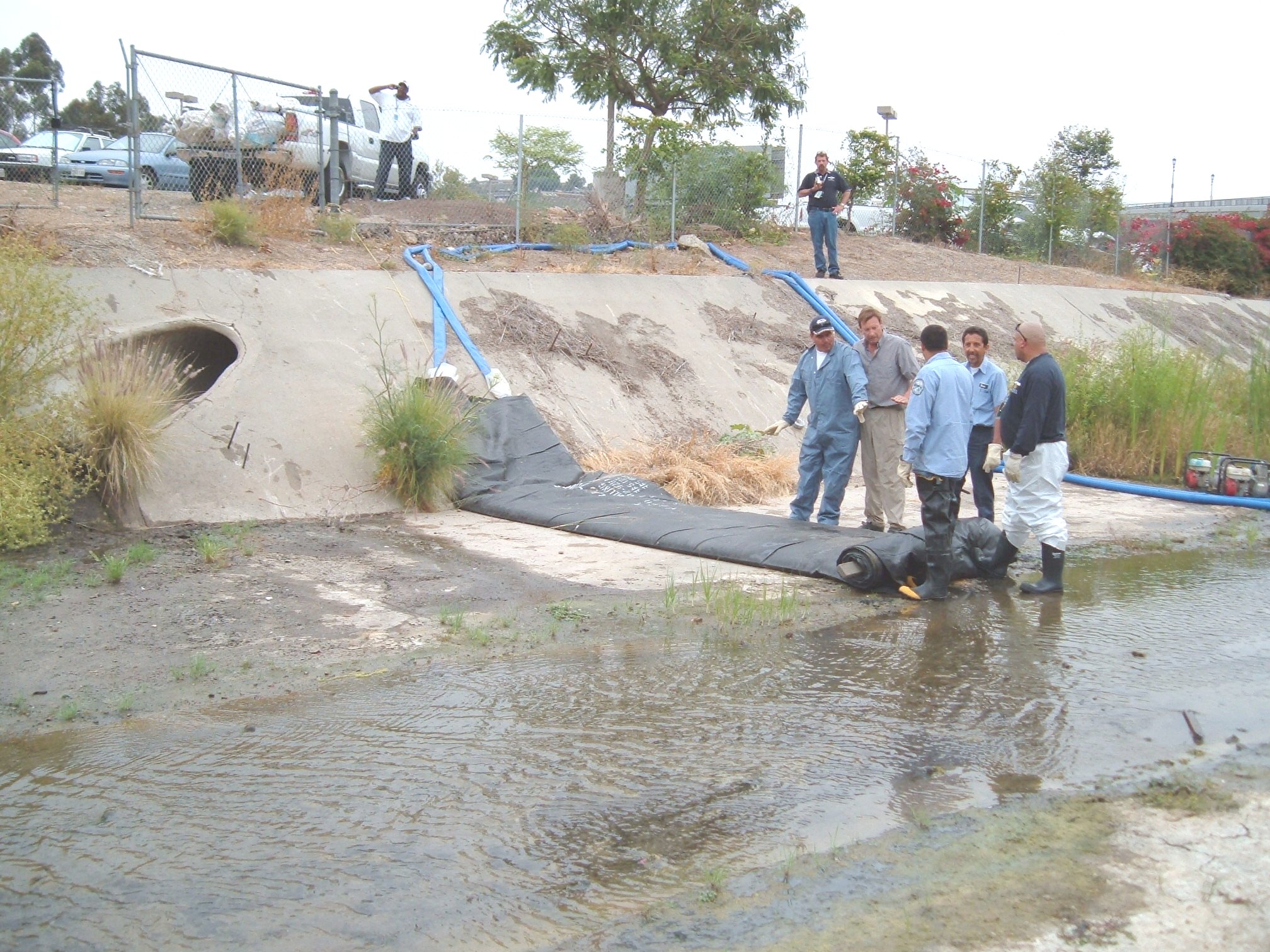
Workers allow the AquaDam® to build head before releasing any more additional length.
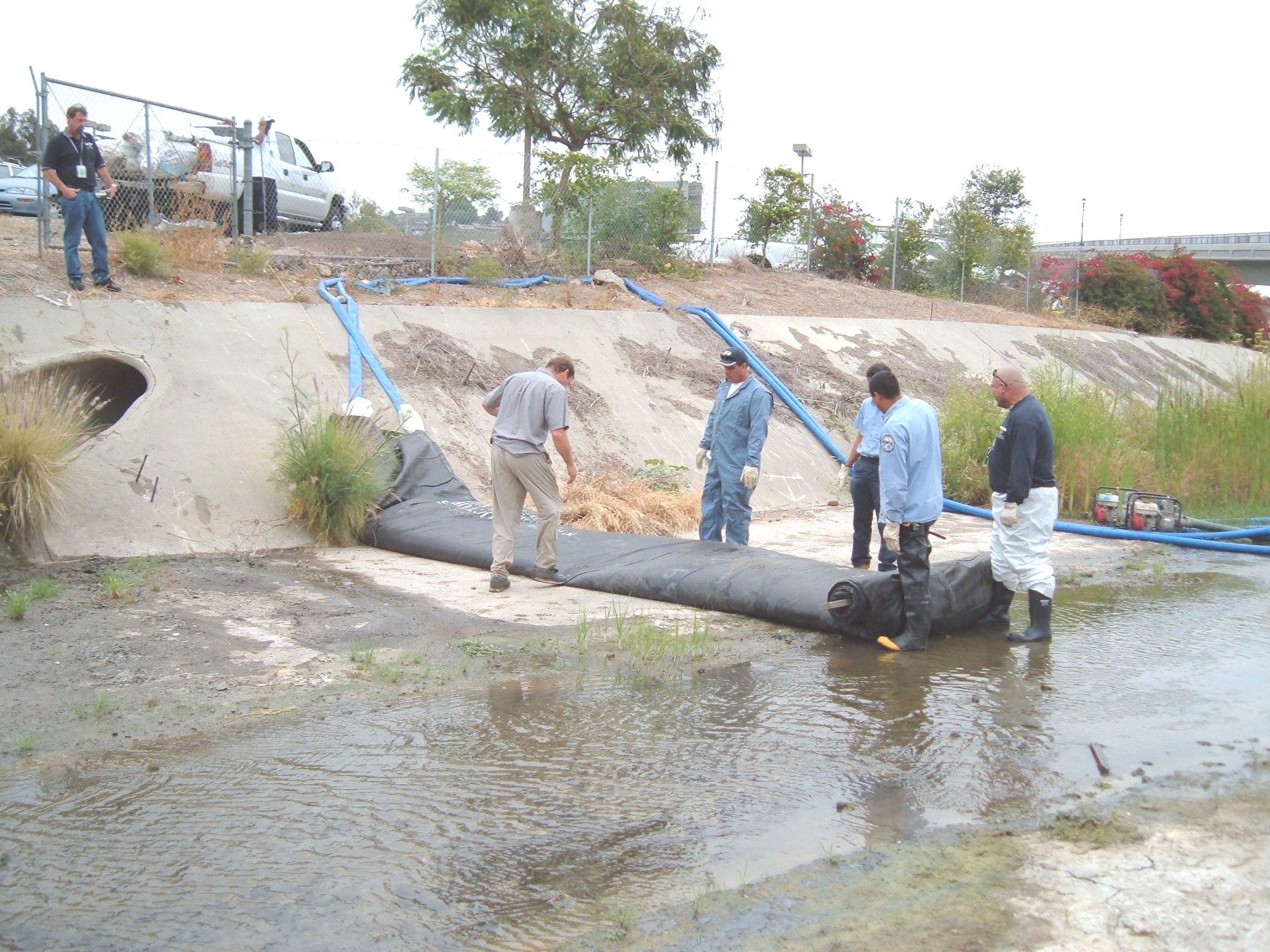
An observant worker has identified a low spot in the canal and has recommended the installation of a restraint in that area to ensure the AquaDam® remains secure as it is being filled with water. It is important to note that water naturally seeks the lowest point, and the water inside an AquaDam® will behave in the same manner. Therefore, it is crucial to effectively control the AquaDam's body during the filling process in order to achieve a successful installation.
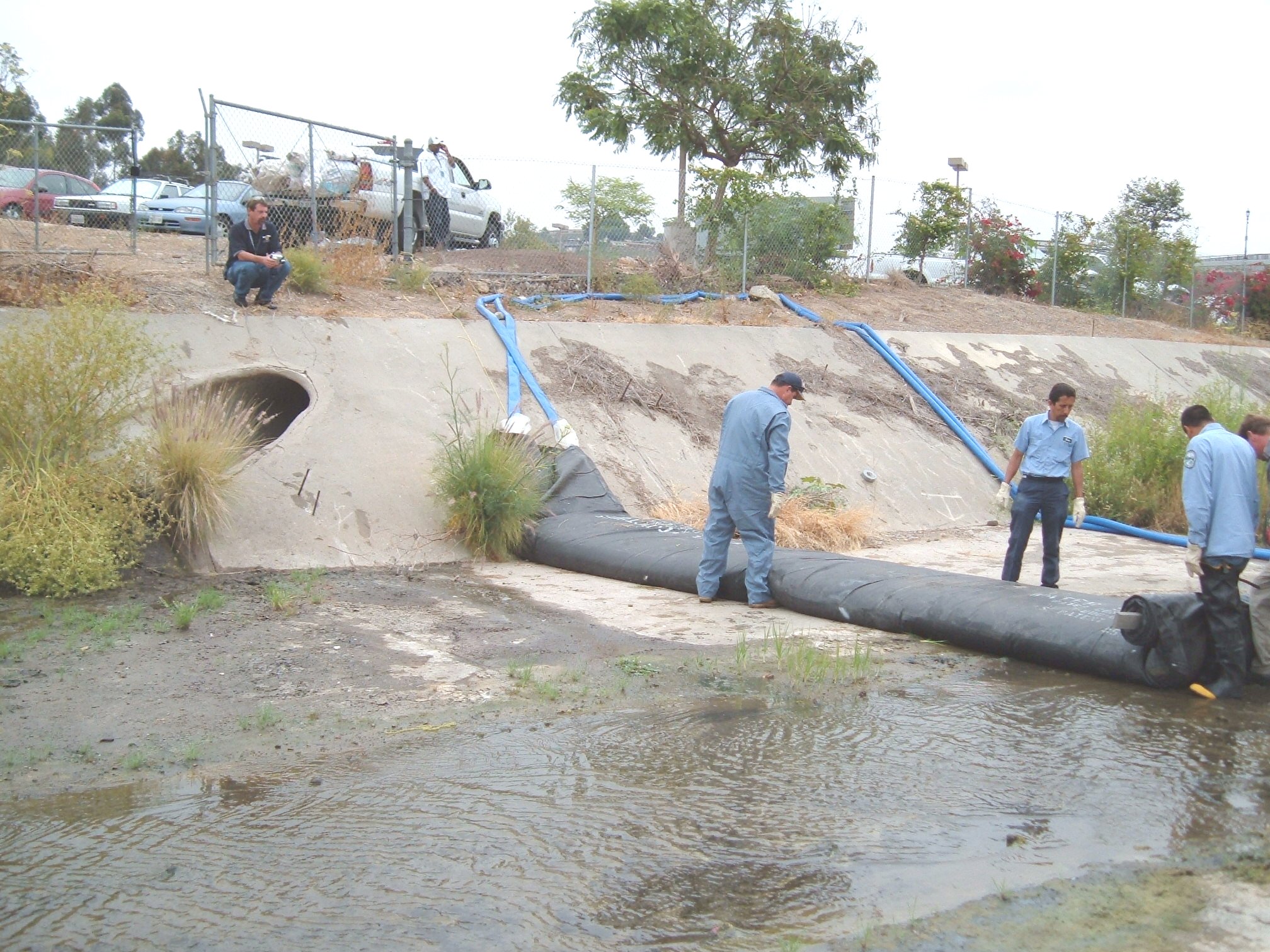
With a restraint now in place (a worker standing in place) and sufficient head inside the dam, workers release a few feet of the roll.
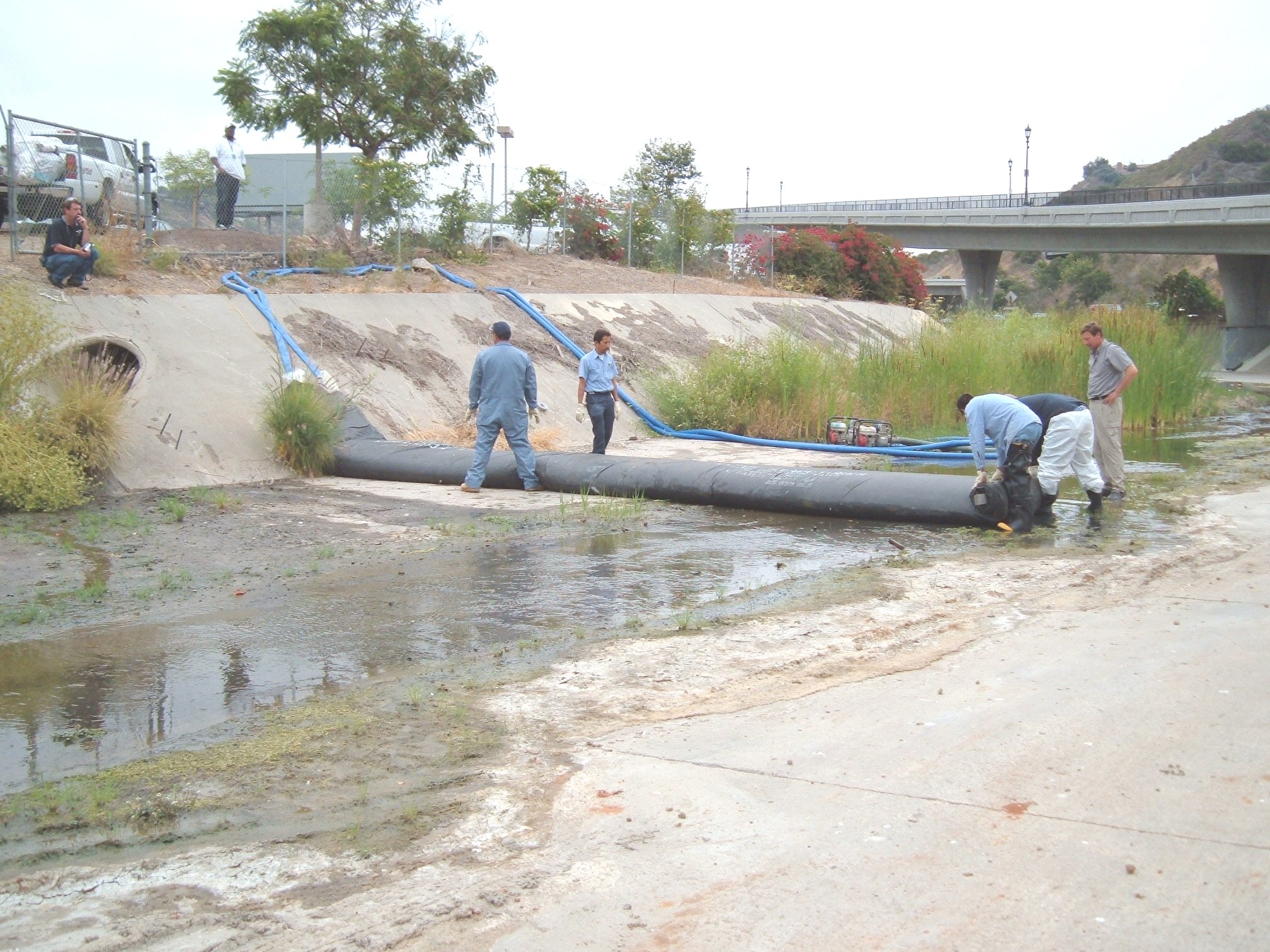
Workers continue this filling process as the AquaDam® crosses the flowing stream of water. AquaDams are constructed using lightweight and flexible materials, allowing them to float when empty in deep enough water. It is important to maintain sufficient head inside the AquaDam® while crossing flowing water.
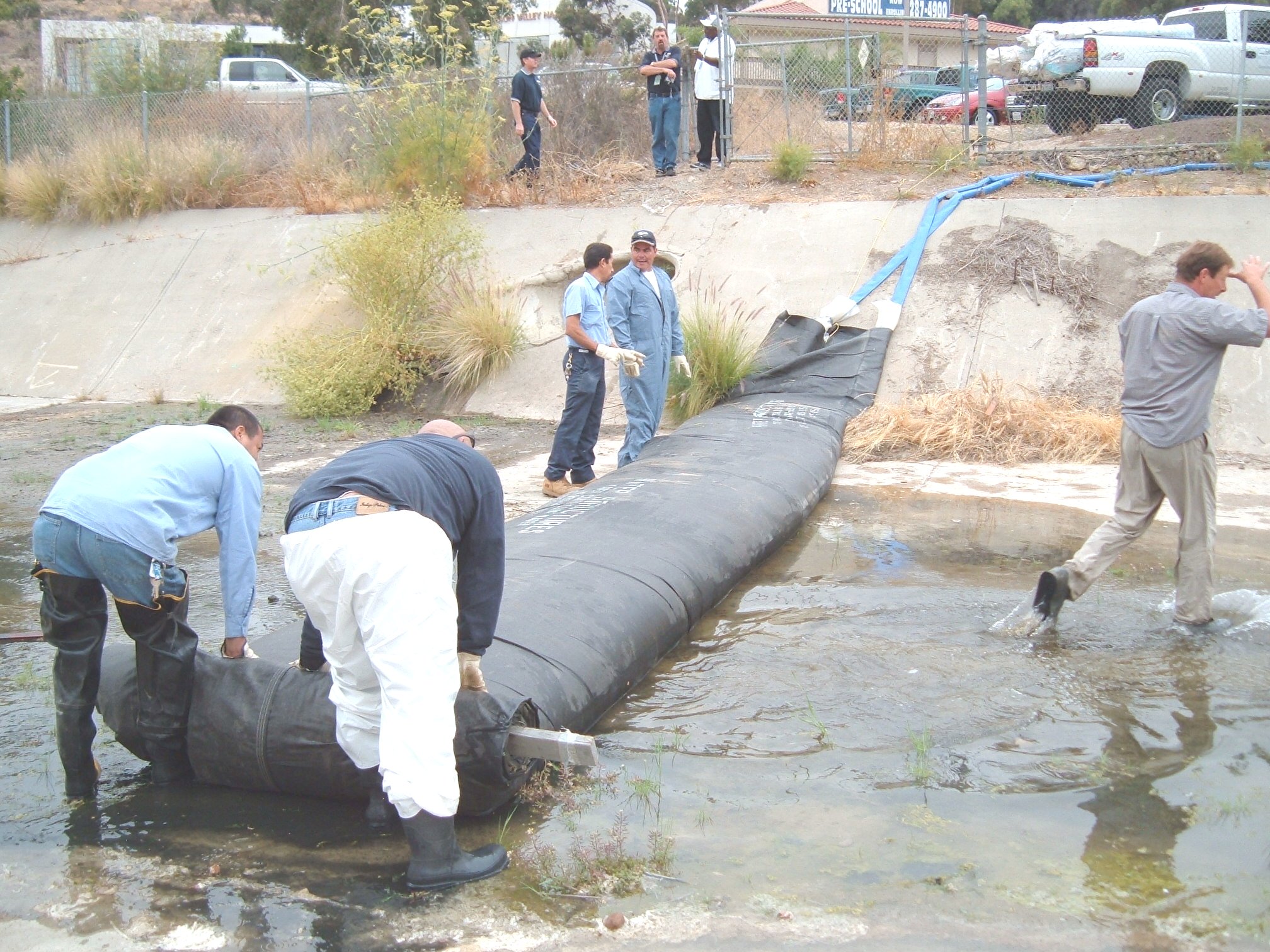
As the waterway is dammed off, the upstream water depth gradually rises.
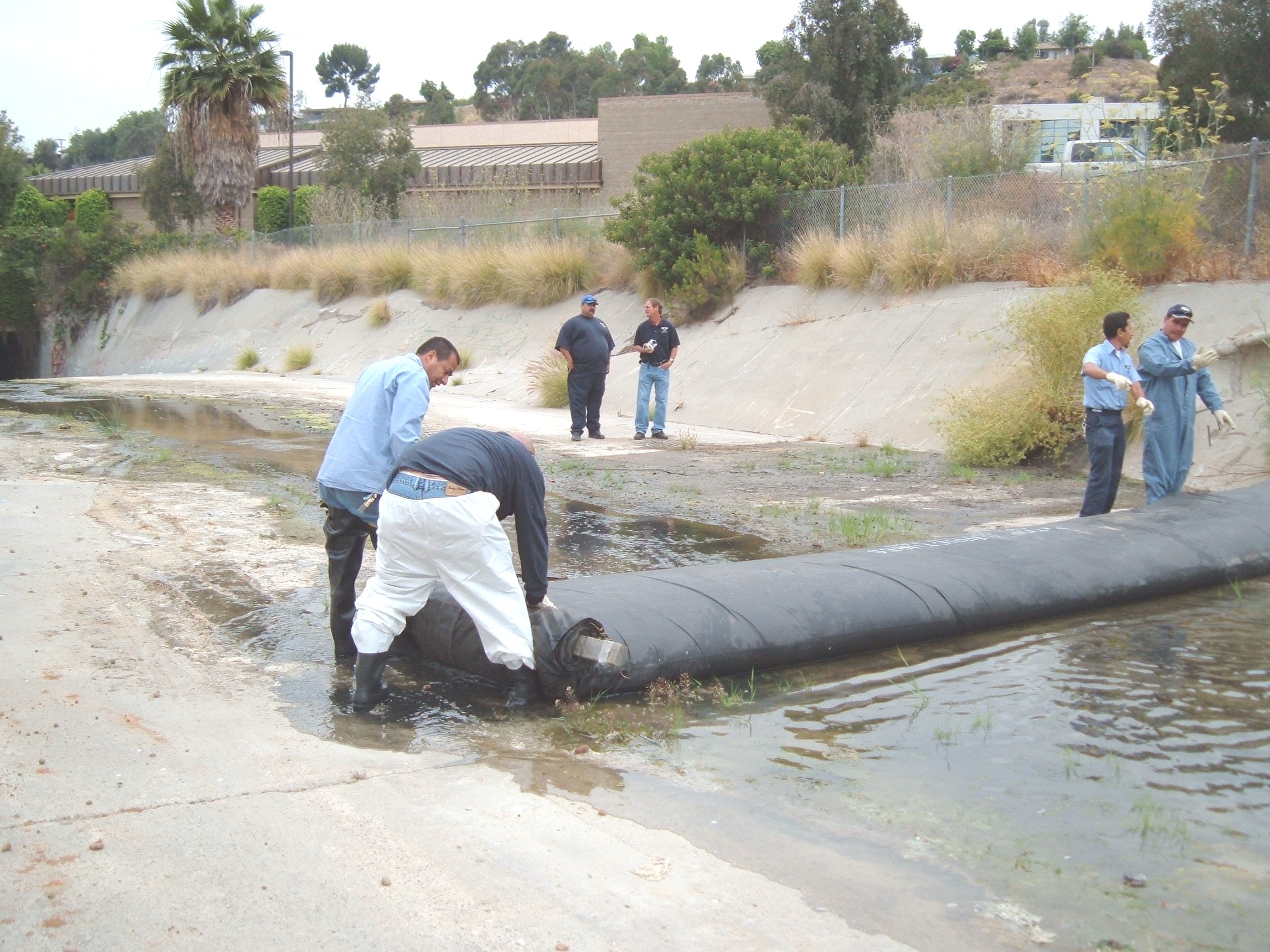
As the water continues to pool upstream, it will naturally seek to flow around the end of the roll. Therefore, workers must ensure they maintain control of the unrolled length and keep a close eye on the roll to prevent any potential issues.

As the roll approaches the ending bank, it is critical for workers to maintain control of the roll because the flowing water will want to push the it downstream.
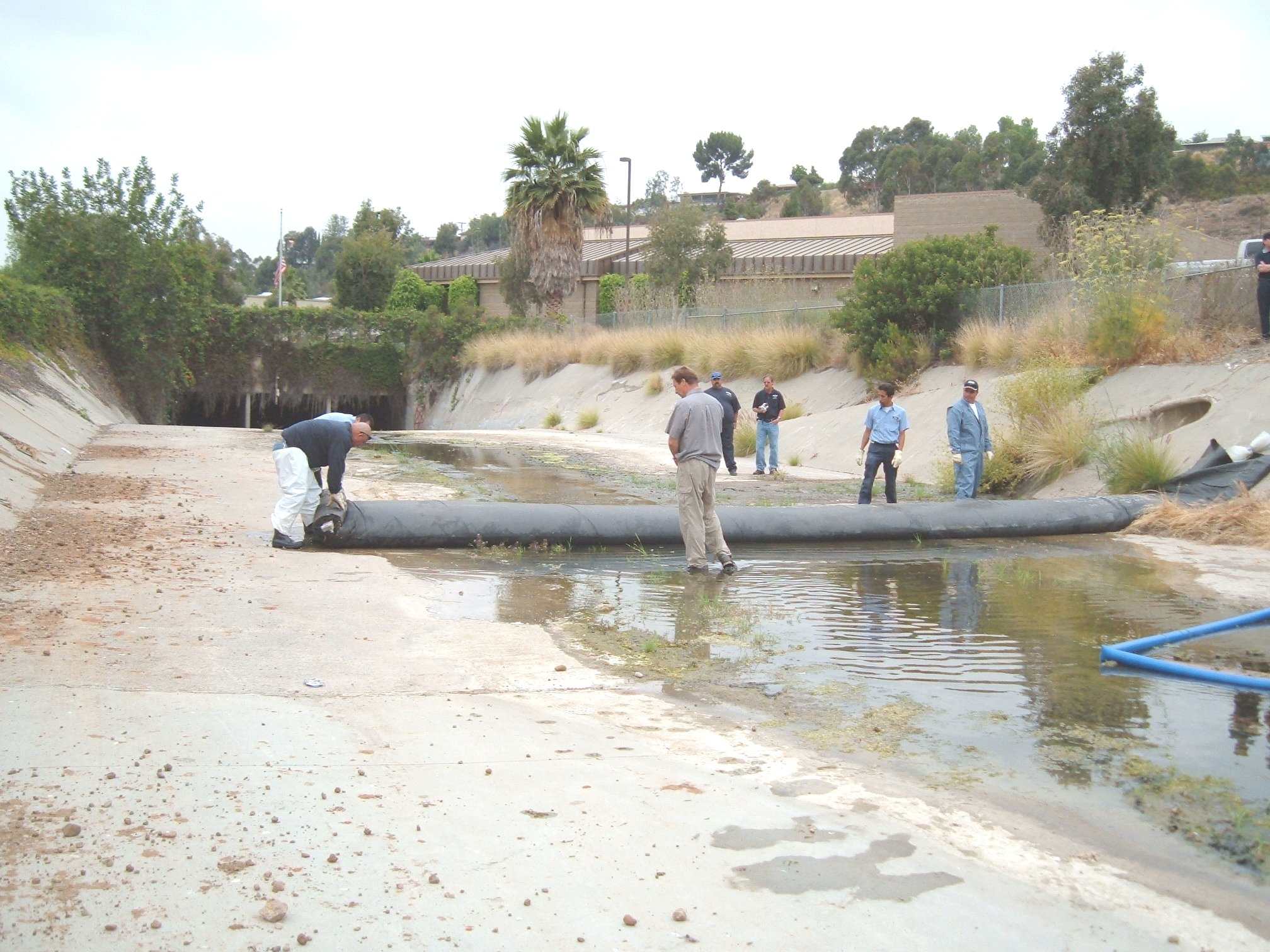
The 18-inch tall SCE AquaDam® has almost completely unrolled to its ending bank. The rocks located behind the workers, who are currently holding the roll, need to be promptly removed from the path of the AquaDam. This task should be carried out by workers who are not actively involved in holding the dam in place as it fills.
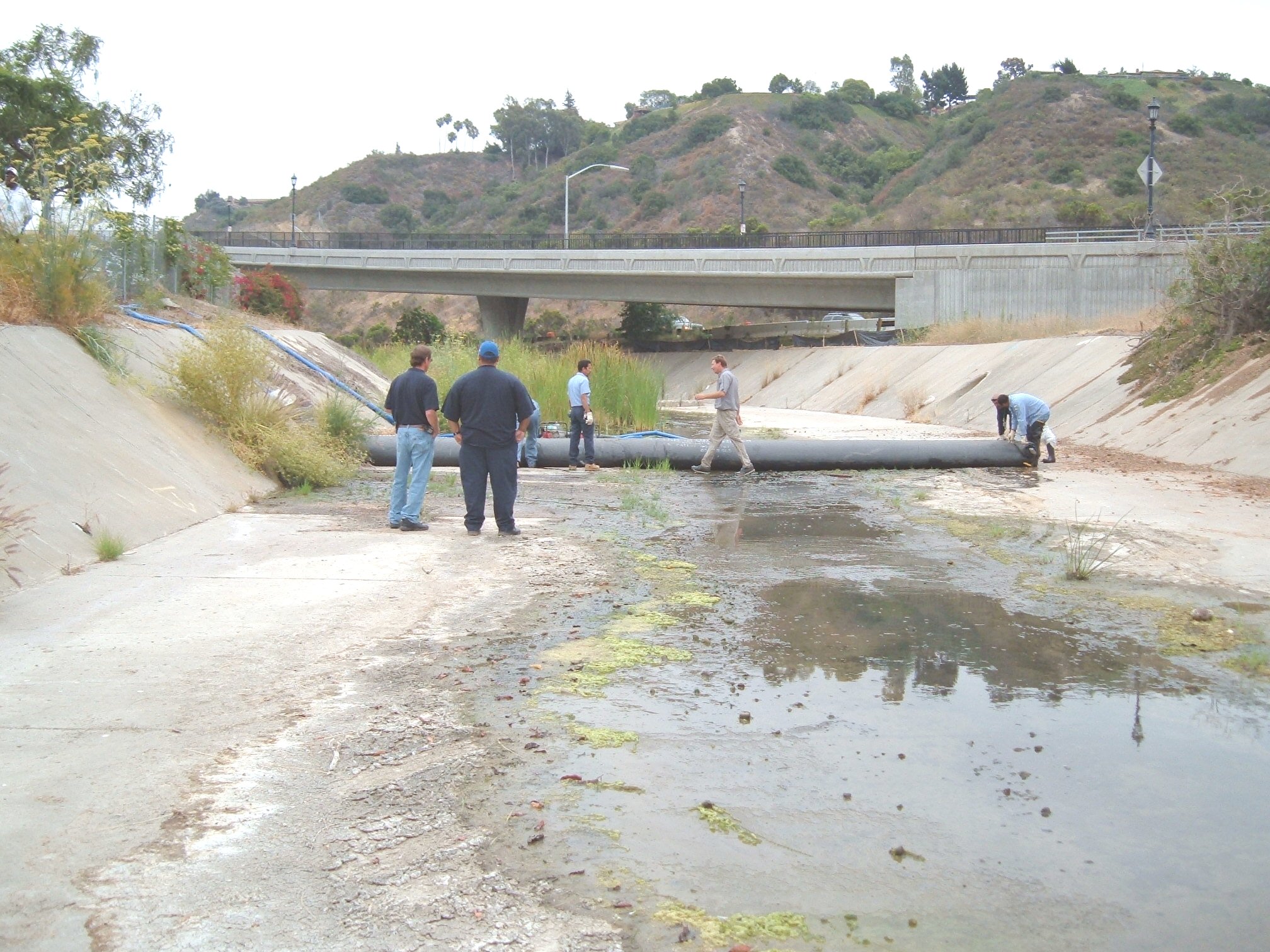
Looking upstream, the flow has been cut off.
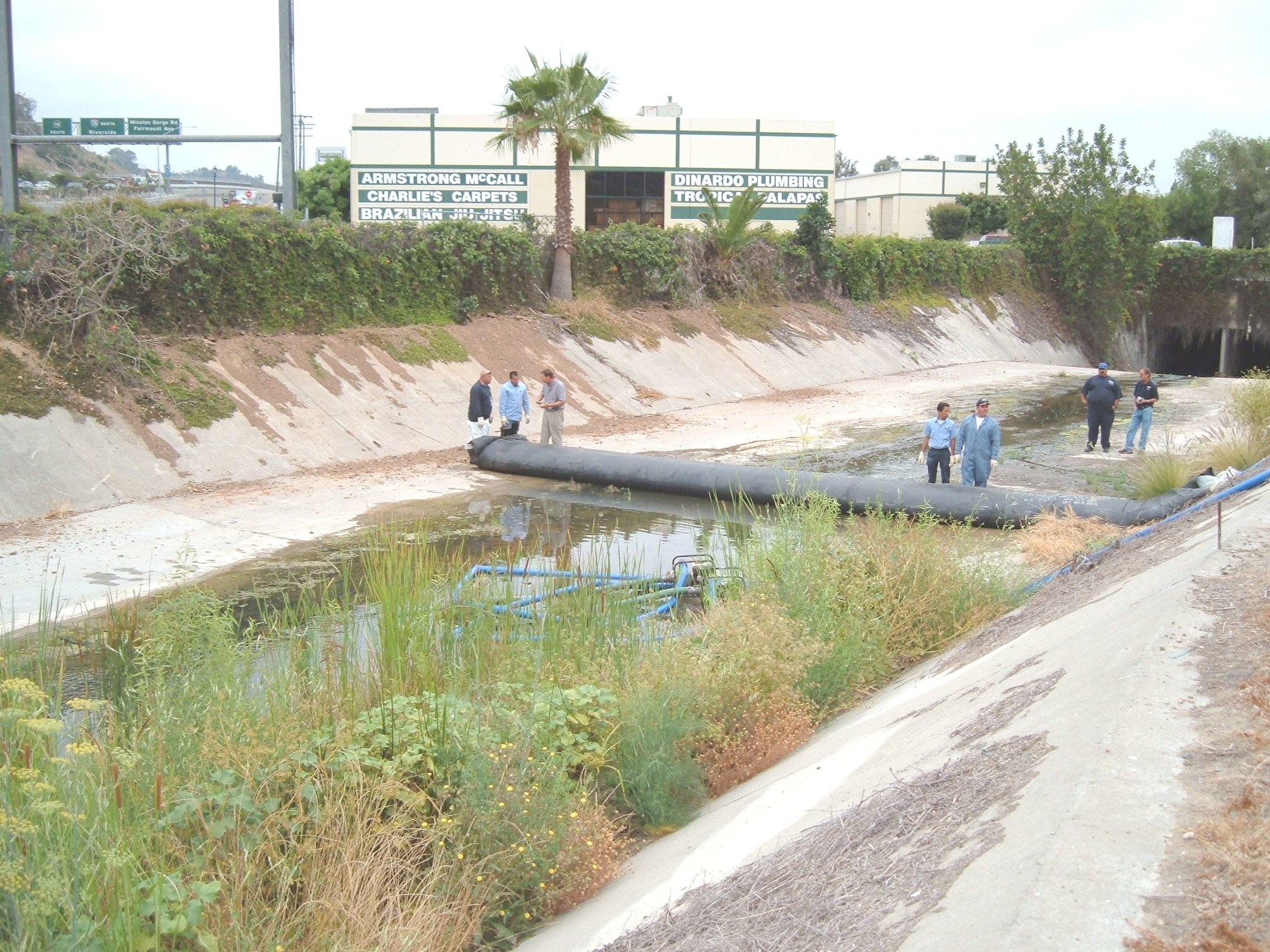
As we look downstream, we observe that the depth of the upstream pool is steadily increasing due to the unimpeded flow. It is imperative for workers to diligently monitor the pool depth to ensure it does not exceed the maximum controllable water depth that this AquaDam® is designed to manage. In the case of an 18-inch tall AquaDam, the maximum controllable water depth is 14 inches. It is crucial that this threshold is not surpassed to maintain the effectiveness and integrity of the AquaDam.
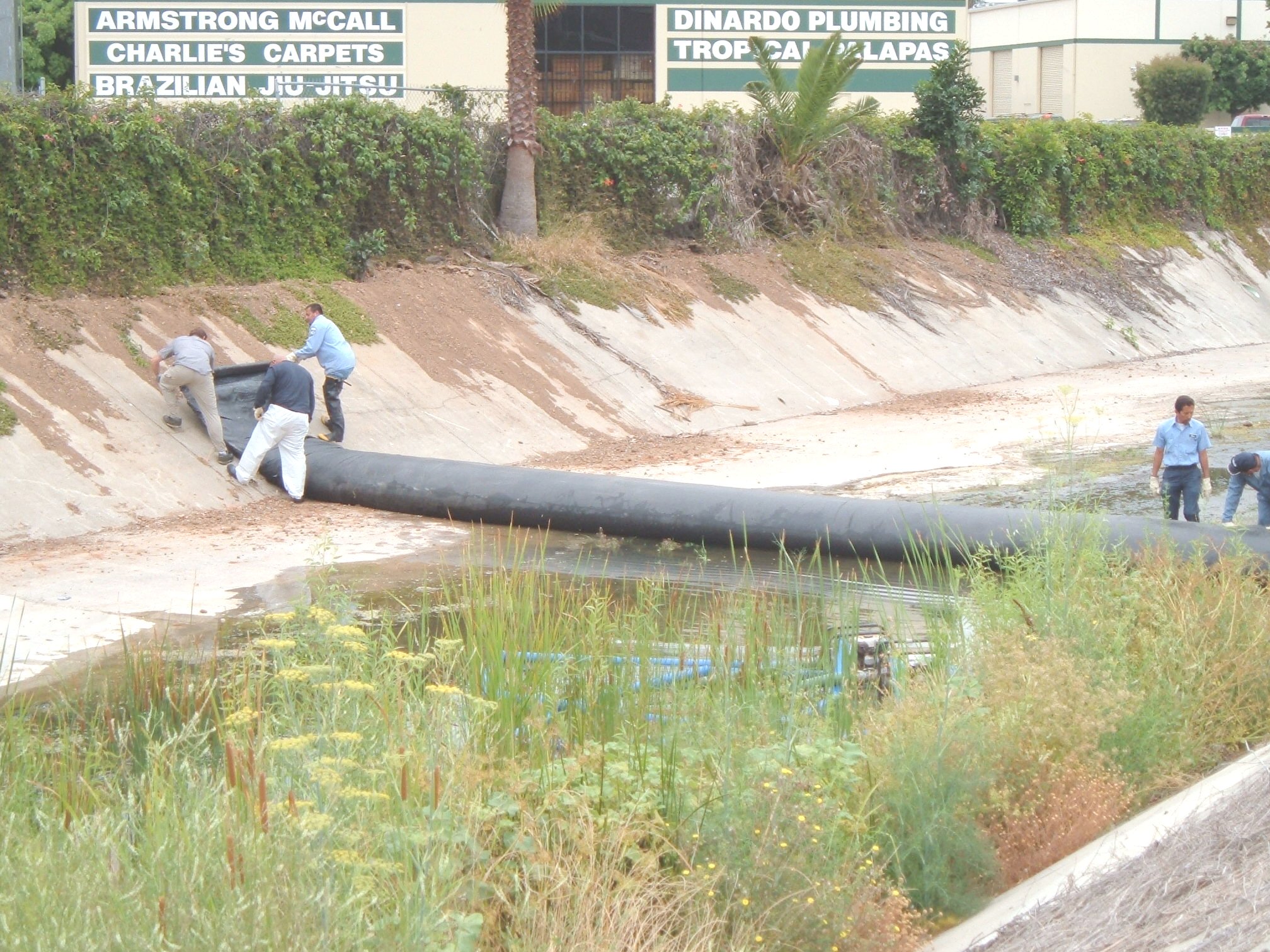
The 18-inch tall SCE AquaDam® has unrolled to its ending bank. An AquaDam® should meet both the starting and ending banks square.
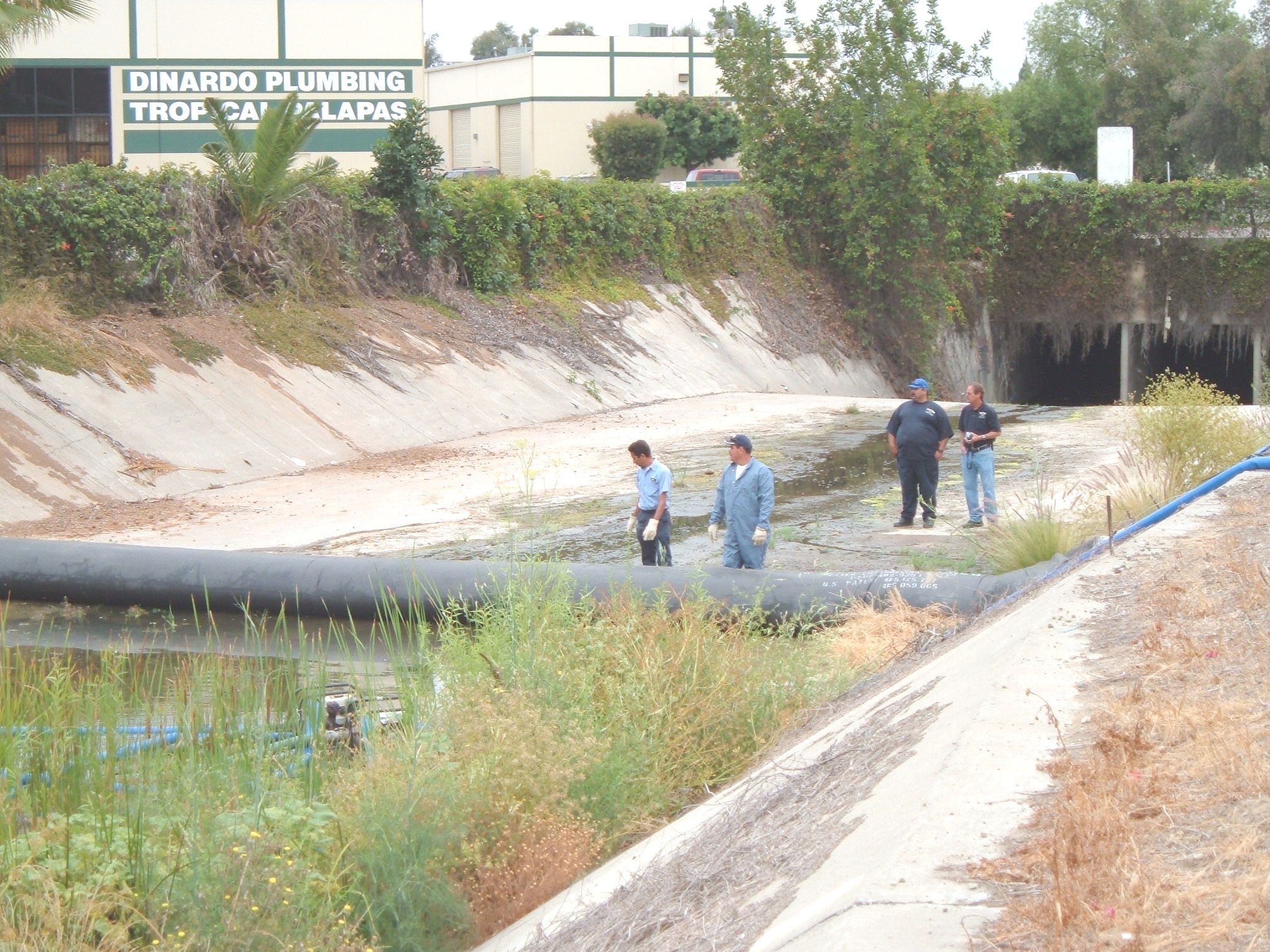
Now that the AquaDam® has been installed the unit will need to fill to its full height.
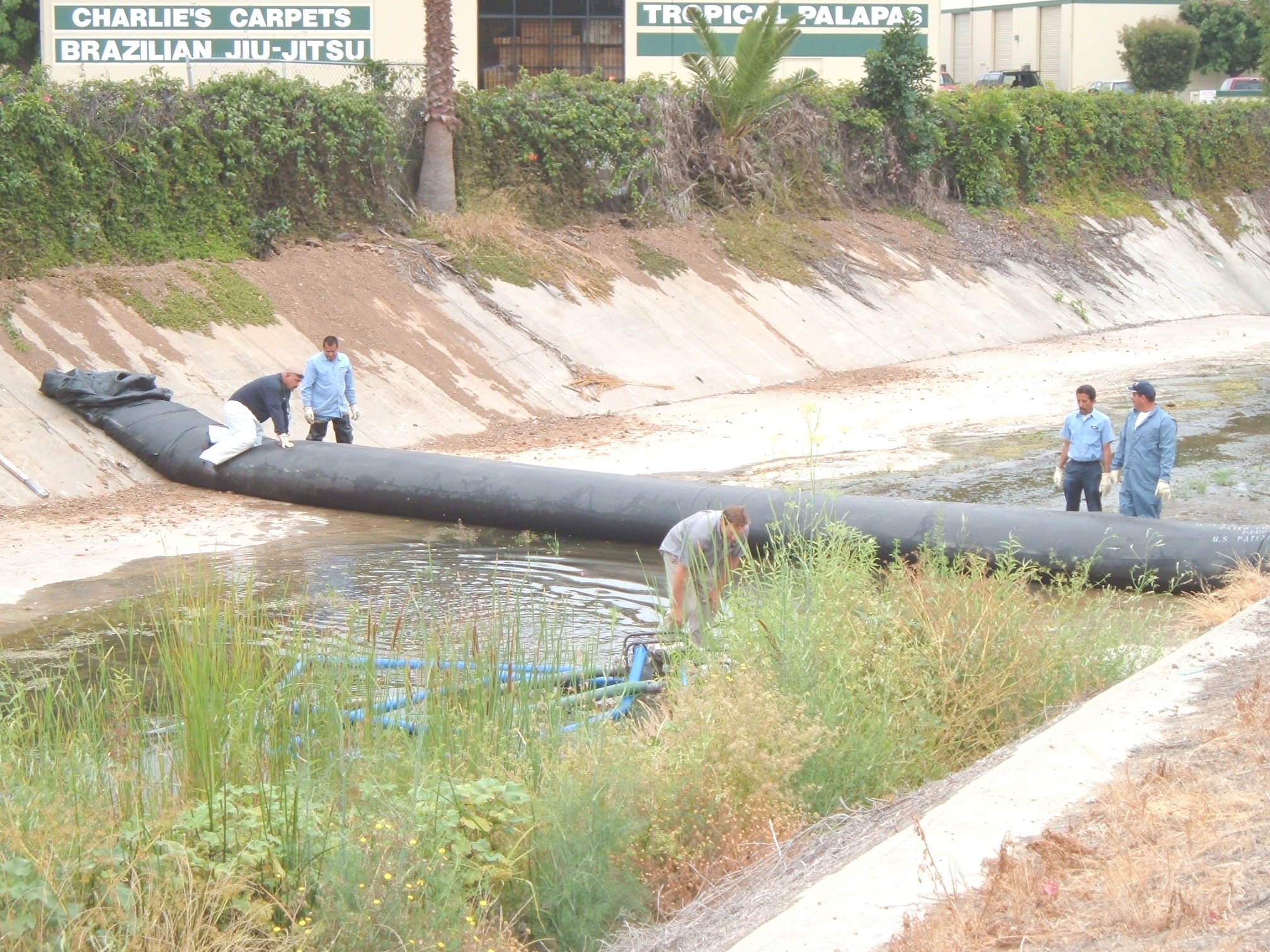
The AquaDam® is now capable of supporting hundreds of pounds without issue. Take note of the variation in water depth between the upstream and downstream areas.
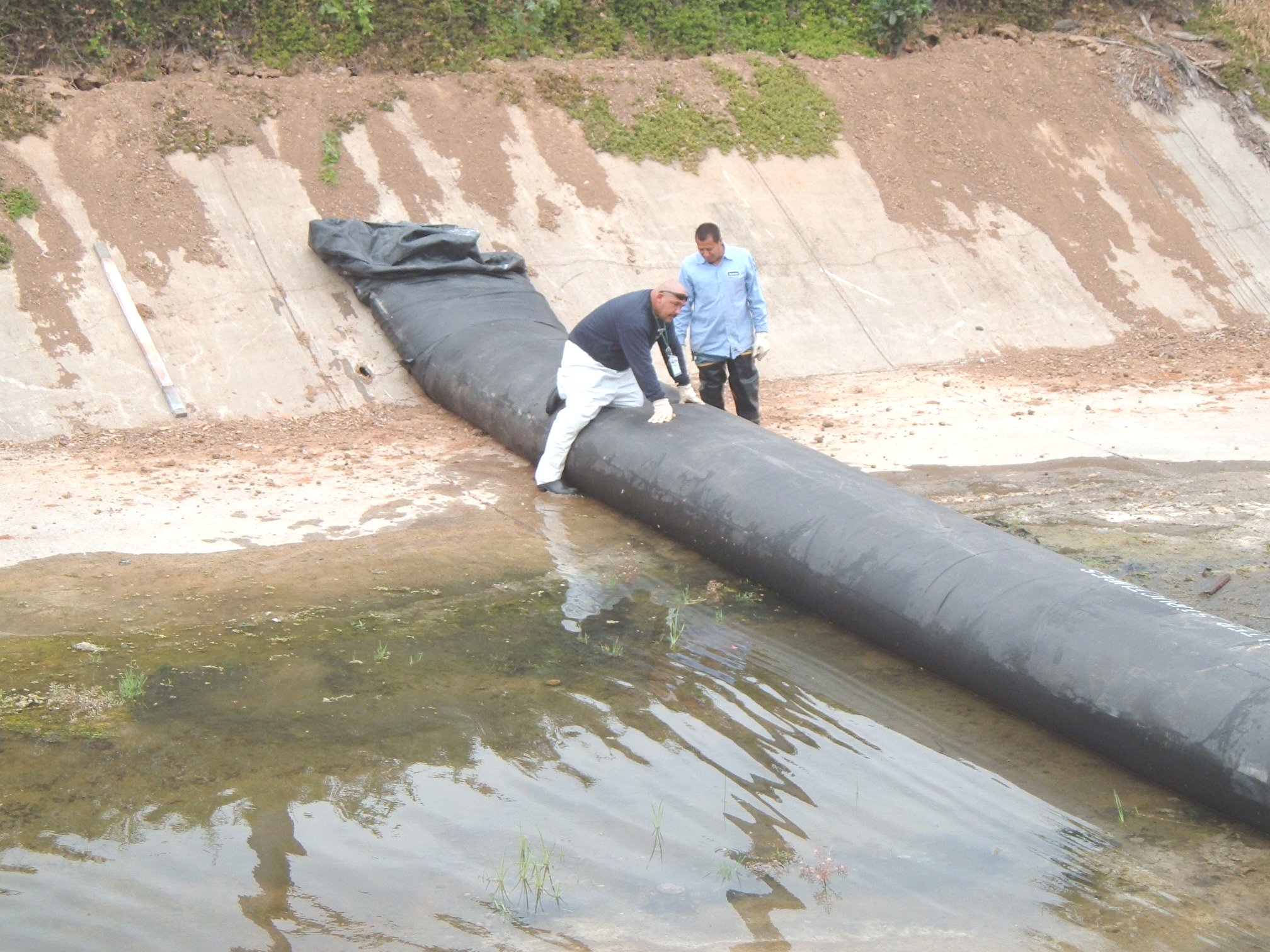
Workers appear to be impressed with this quickly installed water-filled cofferdam.
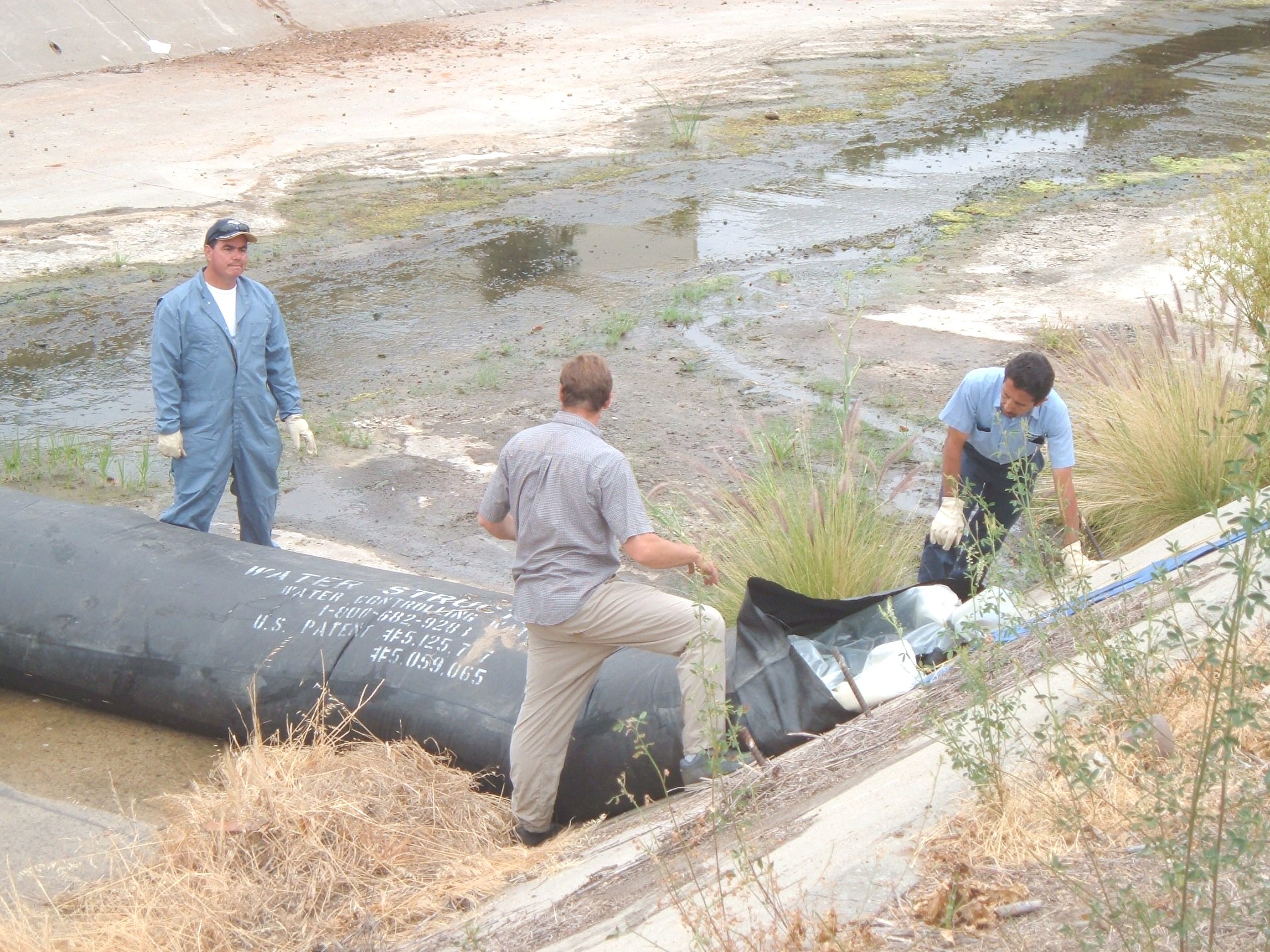
After a SCE AquaDam® is full, its fill-tubes must be secured to not allow the water inside to drain out. Here in this photo we can see the workers have secured the fill-tubes closed with duct tape and tucked them into the open end.
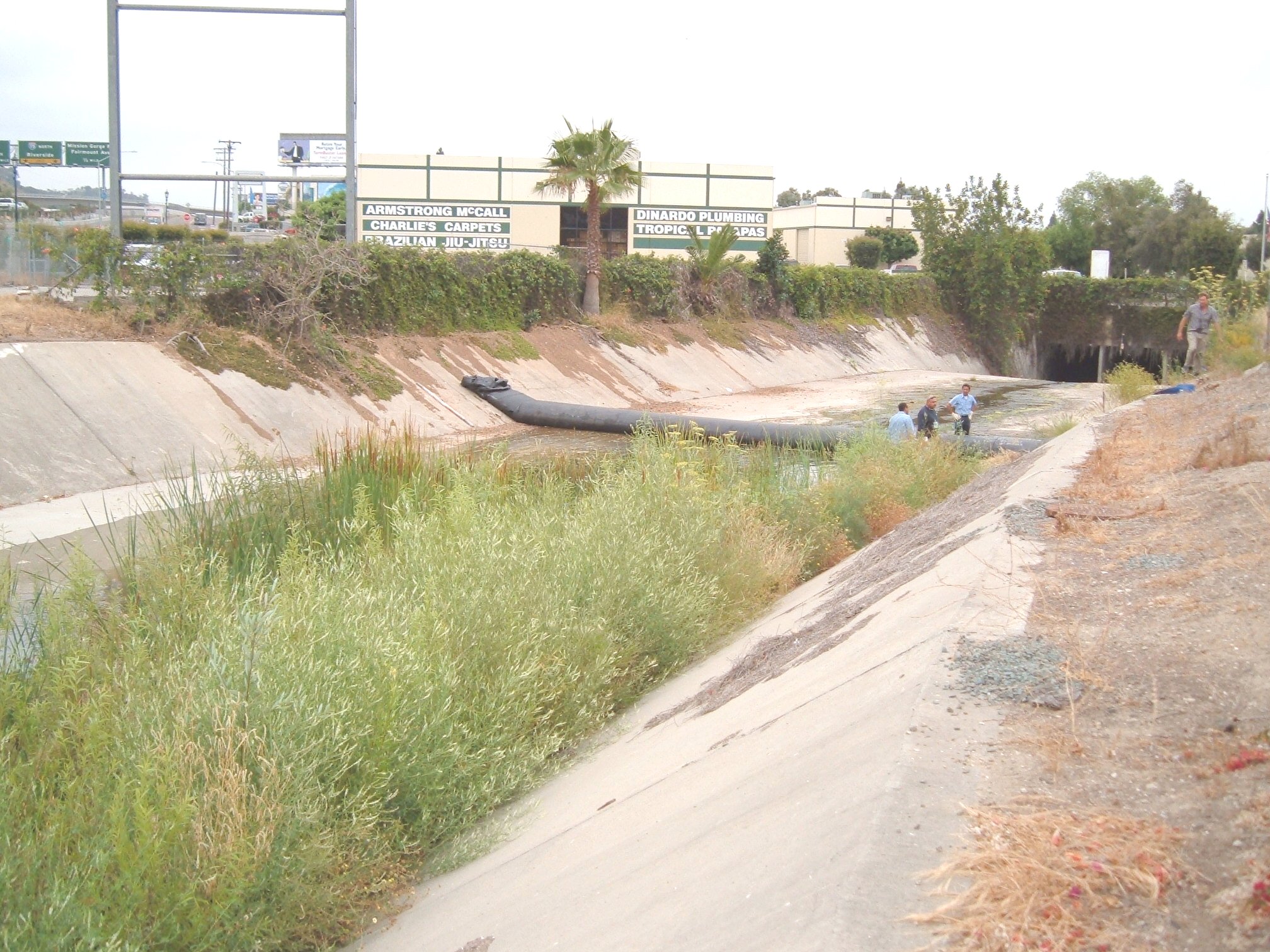
The size of the upstream pool is increasing both in height and width.
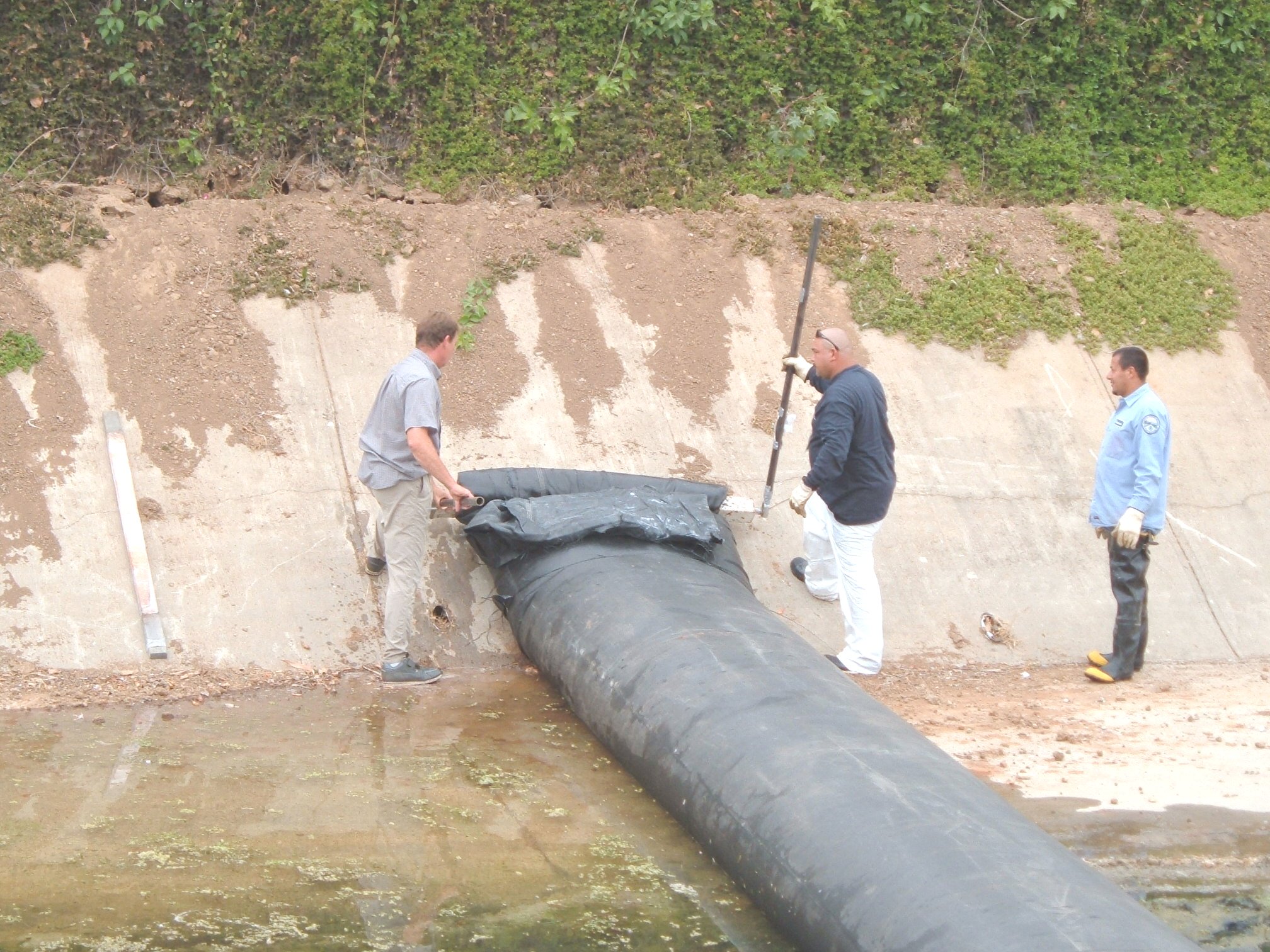
Now that the workers have observed the installation and operation of an AquaDam, it is time to dismantle the dam. The workers have reattached the wooden beam and commenced the process of rolling up the AquaDam. Specialized brackets and ratchets are being utilized by the workers to facilitate the re-rolling of the unit. When removing an AquaDam, it is advisable to re-water the de-watered work area, if feasible. Unfortunately, in this particular instance, re-watering the work area was not possible.
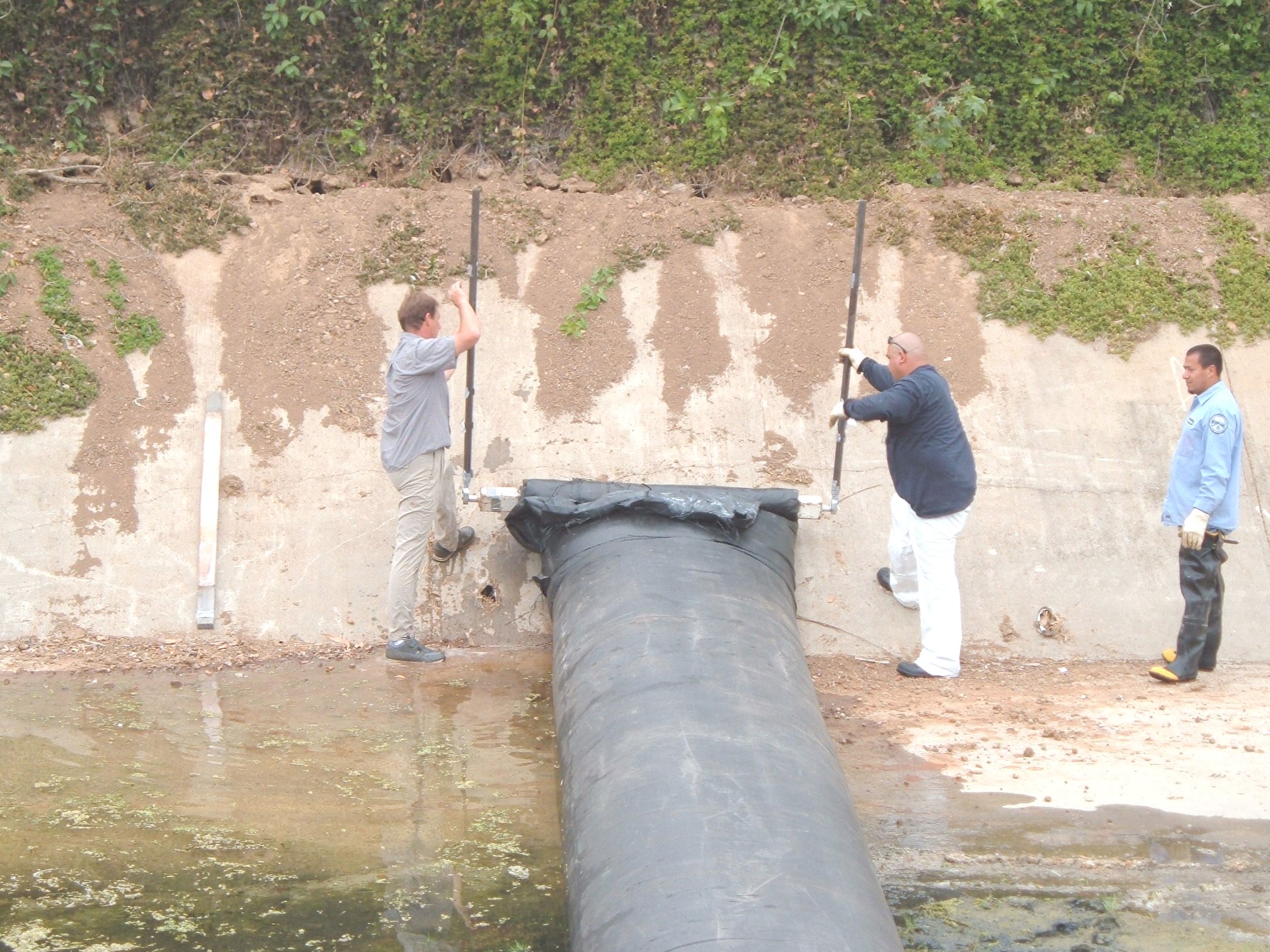
It is important to keep the re-roll the AquaDam® back onto the beam as square as possible.
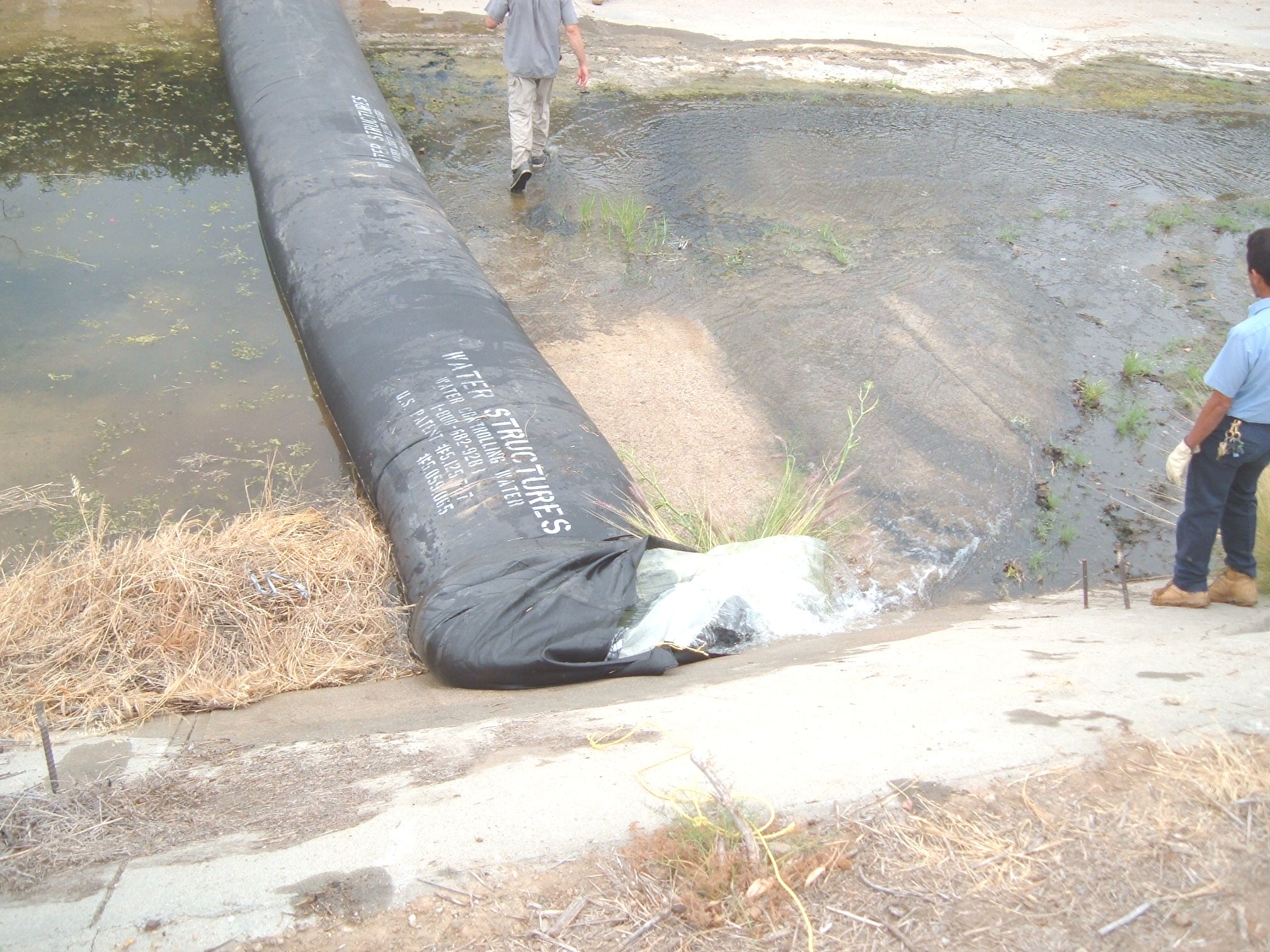
The fill-tubes have been unsecured, opened, and laid down over the side to drain the water out.
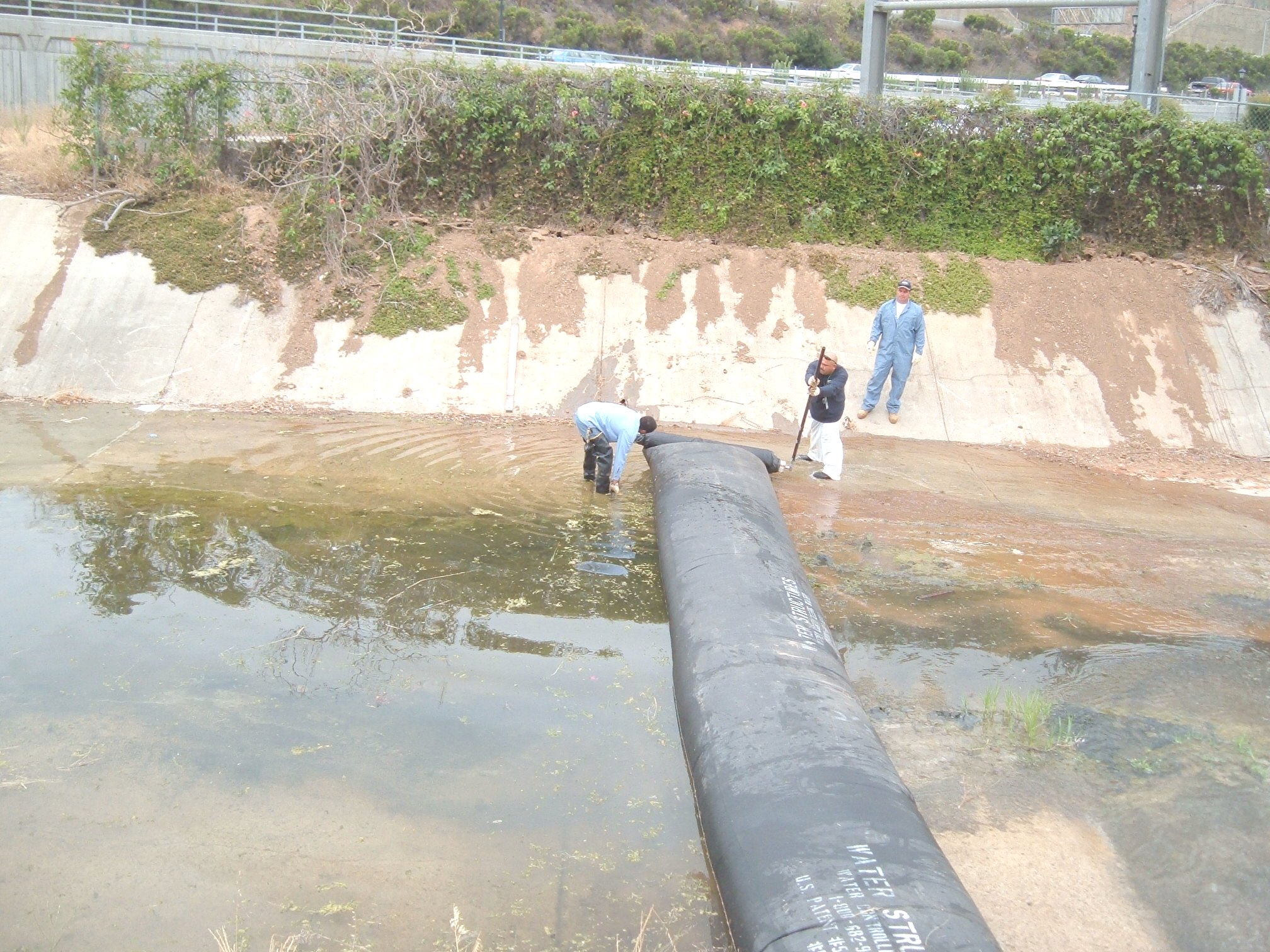
Workers must re-roll the AquaDam® onto the beam slowly and carefully, so that they may have the opportunity to reuse this dam.
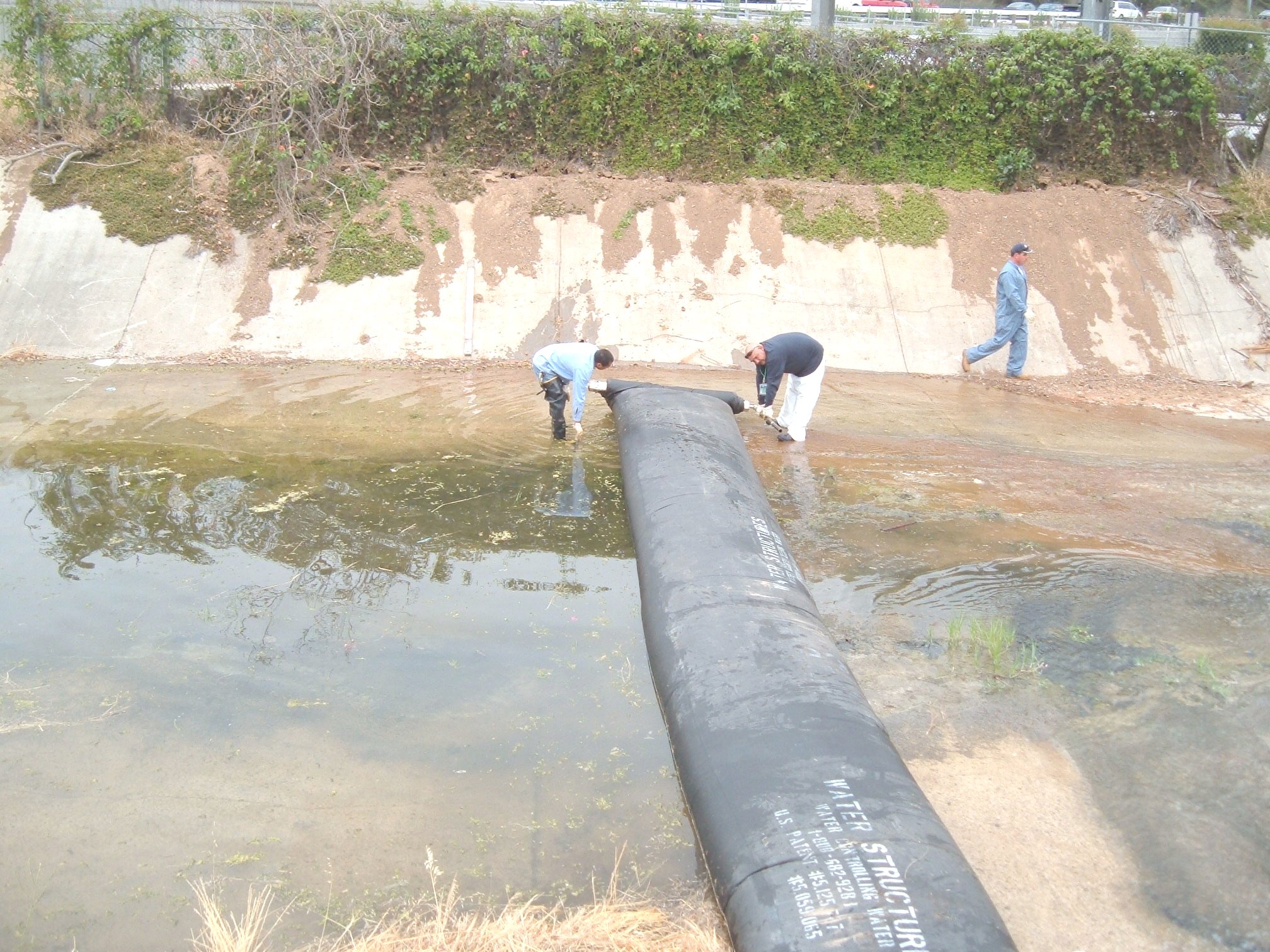
Keeping head in the AquaDam® while re-rolling in flowing water will help keep the unit in place.
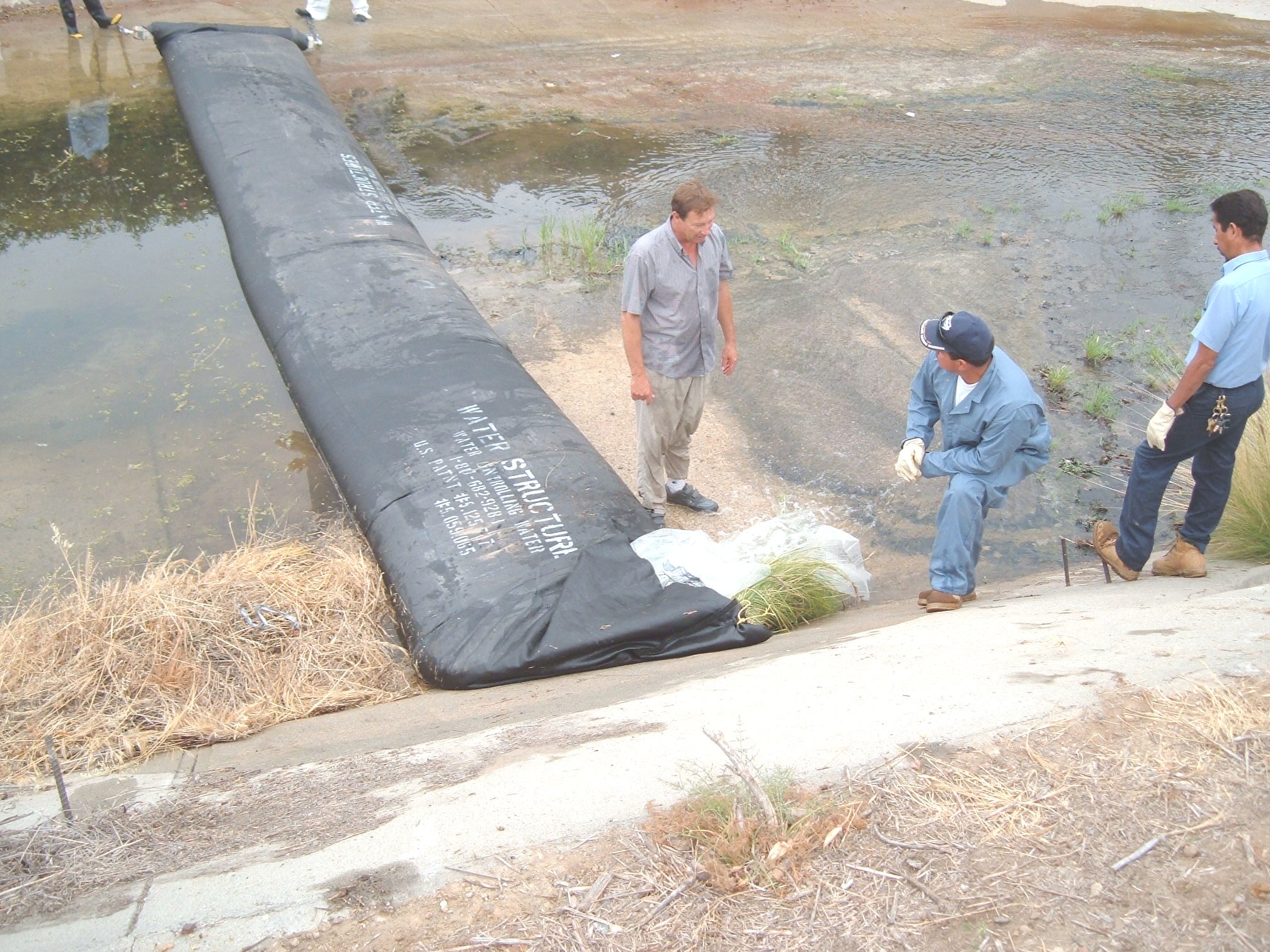
Fantastic job City of San Diego workers and AquaDam!





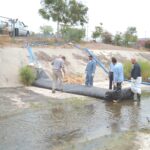
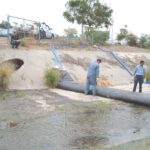
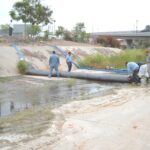









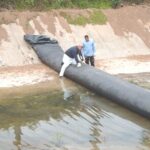


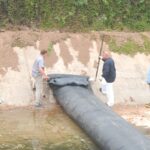




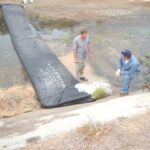
18-inch Tall 3ft Wide (full) 60ft Long Single Closed End (SCE) AquaDam, Emergency Response Training– Canal Demonstration
